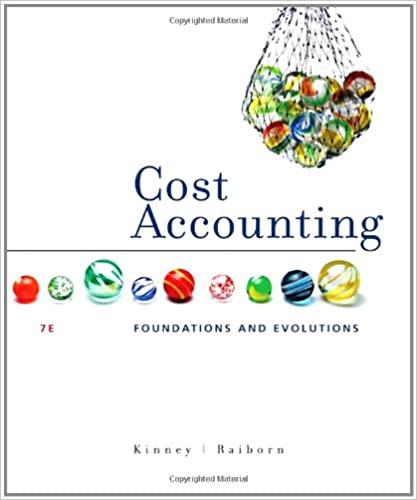With pressures from stakeholders, government and the public, companies often feel the pressure to balance making profits with achieving environmental responsibility as well. This article looks at two different methods to account for environmental costs: ABC costing method and TOC. It shows calculations of both while also offering the positives and negatives to each method.
Discussion Questions: 1. What are some of the main differences between TOC and ABC?
2. What are the common internal environmental costs companies face, according to the article?
3. Explain several scenarios where using TOC is always the best choice.








Environmental Considerations in Product Mix By Julie Lockhart, CMA, CPA and Audrey Taylor, Ph.D, CPA One of the primary objections to the environmental movement is that it is too costly to businesses, which Manufacturers need information from their management accounting systems for maximizing profit, given environmental spending. A 1994 article in Management Accounting by Jerry Kreuze and Gale especially when competing head-on with foreign companies unhampered by similar cumbersome and costly regulations. Increasingly, companies are faced with pressures from government, stockholders, and the public to improve their environmental records while achieving profitability goals to keep Wall Street happy. Some that going beyond regulatory compliance can create value for customers and shareholders alike. With so many pressures, how can management best make profitable choices between investing scarce resources to reduce environmental waste or to increase (ABC) in conjunction with life-cycle costing for allocating environmental costs to products to get a companies are finding, however tracks costs over the entire product life cycle "from cradle to grave." Their article illustrates the implications on profitability analysis from using the costs. The illustration, however, does not consider constraints in the production process, so the product mix decisions made from ABC information may not corporate performance, they need to be COMPARISON OF ABC AND TOC Focus Cost control Simpility processes Reduce product oferings dontifies unused apacity the practical volume of the cost Simplity control denifies resource usage on each resource Treatment of Capacity anticipared or normal capacity Focuses on the constraint volumes are used for the cost driver rates, capacity is ignoredt incernal, by maximizing prolit over the constraint hrough priontization of production given Cost Behavior All allocated cests are variable Variable Co Step-Fixed Cost BehaviorAs activity usage decreasos, s Cetalysts for Cost Control Allecating coste is the best way t0 Viewing fixed costs in a lump sum and Only Usit-level costs are variable costs are variable Stap-fixed cosis change only at the edges of the steps does the cost of the activity contrel the cost by encouraging the reduction of the cost to0 expensing the cost in les entirety is astrong motivater to control the cost Timing of Expenses Expense most production costs in the period they are incured when the unit is sold terns that impact Income Seles and Production levels car Sales levals impact incoma impact income














